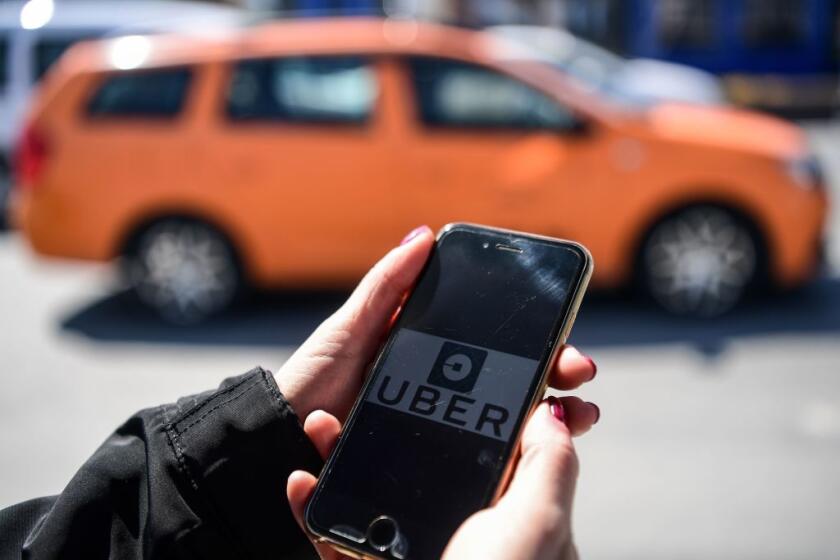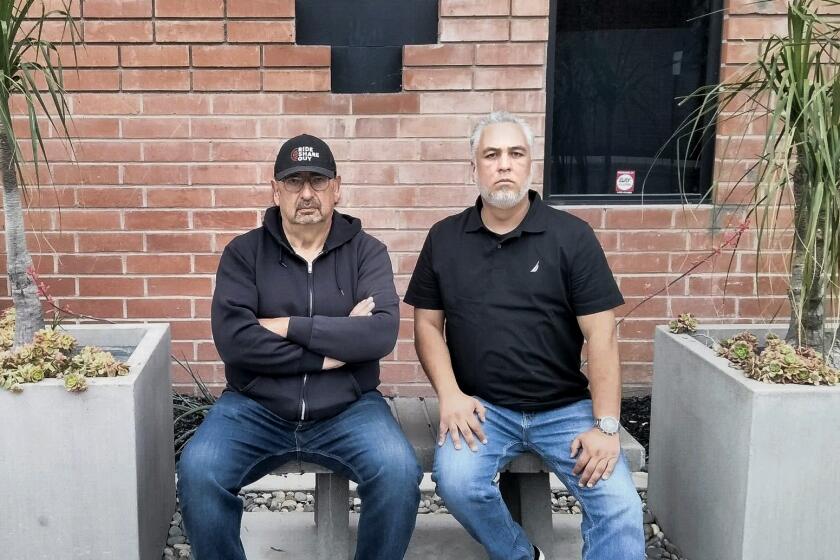Gig drivers strike in L.A. and other major cities, hoping to disrupt Valentineâs Day business
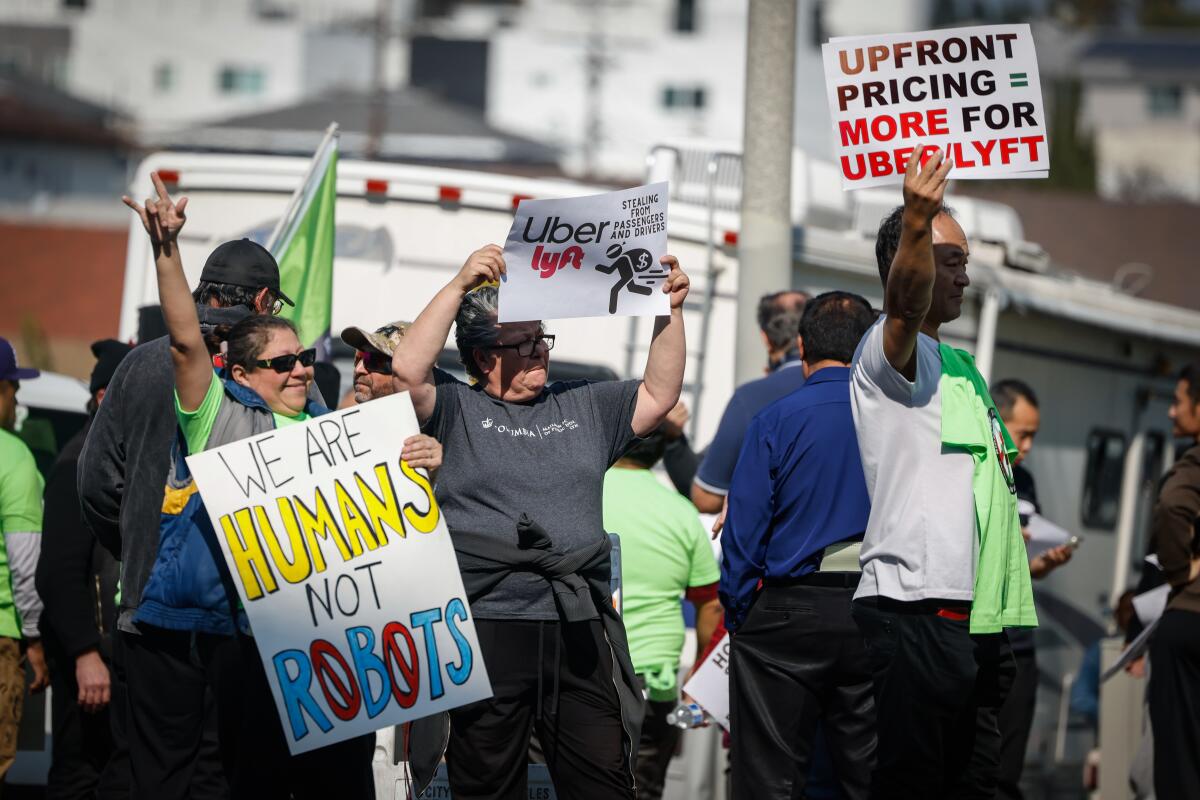
Los Angeles Lyft driver Shan Sedigh held out his phone. On the screen, Lyftâs app detailed a Feb. 9 ride for which Sedighâs passenger paid $105.40. Sedigh earned a little more than half of that at $53.11.
âThis is why Iâm here,â Sedigh said, surrounded by scores of ride and food delivery drivers Wednesday as they protested outside an Uber drivers support hub in Westlake, west of downtown Los Angeles, part of a one-day work stoppage to demand better wages.
âI pay gas, insurance, repairs,â the 50-year-old West Hills resident said. âLyft just connects the driver to the customer. Why do they get 50%?â
The one-day strike hit more than 20 major cities across the U.S. and Canada, including Los Angeles. Food delivery drivers in London joined in, vowing to turn off the apps between 5 and 10 p.m., according to the Associated Press. The action targets what is typically a busy holiday for ride-hailing and delivery giants.
Although there have been sporadic, isolated protests by drivers in various cities in recent years, organizers say the Valentineâs Day protest could be the most ambitious labor action to date, with drivers across the country coalescing organically.
Drivers are protesting what they describe as poor wages and rapidly shrinking transparency in how the companies pay drivers their share of earnings.
California gig law Proposition 22 â which was established by a voter initiative bankrolled by Uber, Lyft, DoorDash and other companies in 2020 â has hurt drivers, said Nicole Moore, a driver and the president of Rideshare Drivers United, the 20,000-member Los Angeles group coordinating local drivers.
With reams of data at their disposal, companies like Uber and Amazon are demolishing the notion that people who do the same work should receive the same pay for it.
The law promised some benefits to drivers â including a minimum earnings guarantee and healthcare reimbursement â but they have proved difficult to access or so minimal as to be useless, she said.
Drivers have complained that companies track their behavior on the apps to determine what the companies will pay the drivers, and the workersâ only power is to accept or decline a job.
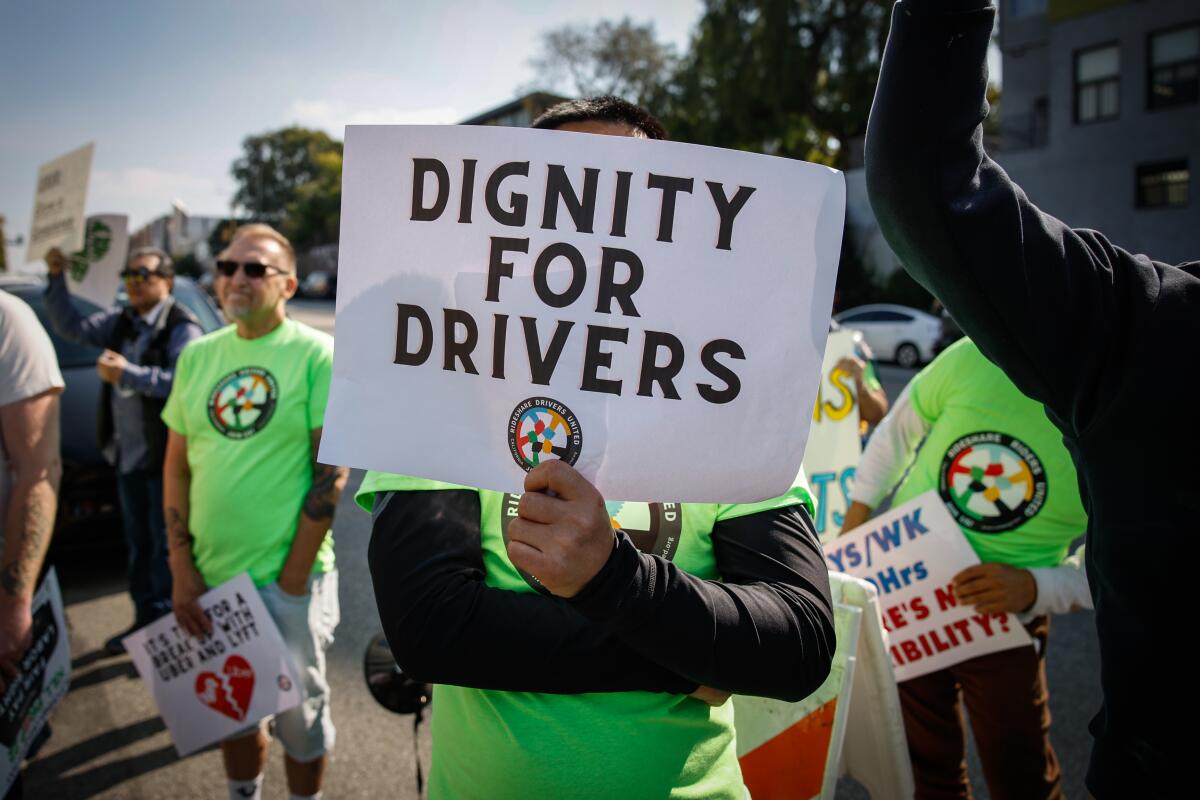
âItâs a shell game and thereâs no way to enforce this stuff because itâs all an algorithm in a black box â how weâre paid and whether or not we get benefits,â Moore said.
Gig drivers group Justice for App Workers told the Associated Press that thousands of drivers had stopped working at some point Wednesday, with protests at airports in cities including San Francisco, Chicago, Miami and Newark, N.J.
Uber and Lyft representatives dismissed any effect from the strike.
âThese types of events have rarely had any impact on trips, prices or driver availability,â Uber spokesperson Zahid Arab said in an email. âDuring last yearâs Valentineâs Day âstrike,â we saw an increase in trips in the U.S.â
Lyft spokesperson CJ Macklin said that âtraditionally, these events have not had a meaningful impact on wait times or service levels.â As of Wednesday afternoon, the company had not noticed any significant disruptions, he said.
Drivers interviewed at the Wednesday protest in Los Angeles said that about a year ago companies began showing drivers their rates offered on rides, giving them the option to accept or decline, but around the same time appeared to offer fewer well-paying longer rides, leaving them with shrinking earnings.
Frank Kash, 30, waved a sign reading, âCorporate Lies Are No Surprise.â Scrawled across the sign in Farsi was an expletive aimed at Uber Chief Executive Dara Khosrowshahi, who, like Kash, is Persian.
âHe is basically stealing from us,â Kash said. âKhosrowshahi, you owe me money.â
For an Uber trip he drove Tuesday, Kash said he earned $24; the customer told Kash he paid about $60, making Kashâs earnings about 40% of the fare.
âItâs a shame,â he said.
Macklin said Lyft made new commitments this month to increase driver pay and transparency. They include providing a clearer summary of the ânew minimum earnings guarantee that drivers will always make at least 70% of the weekly rider fares after external fees,â he said.
After Uber and other gig giants failed to pay a mandated rate hike, two eagle-eyed drivers started asking questions â and won a jackpot for California gig workers.
He said the company is also providing a new in-app button for drivers to appeal deactivation decisions and providing direct access to a specialized support team focused on appeals. Drivers have complained that the apps haphazardly shut down their account access, and that the decisions are difficult to get reversed.
âWe are constantly working to improve the driver experience,â Macklin said in an email.
Of concerns raised by drivers, Uber spokesperson Arab said the âvast majority of drivers are satisfied.â
He disputed that driversâ take of fares represented a small portion relative to Uberâs and said the company has made significant investments in driver benefits afforded by Proposition 22, investing more than $800 million since January 2021.
âUberâs effective take rate in the U.S., net of commercial insurance costs, is well below 20%,â he said. âEvery driver on the Uber platform benefits from the historic protections and benefits afforded by Prop. 22.â
Uber said its U.S. drivers earn an average of $33 an hour, while Lyft said its U.S. drivers make an average of $30.68 an hour, or $23.46 per hour after expenses.
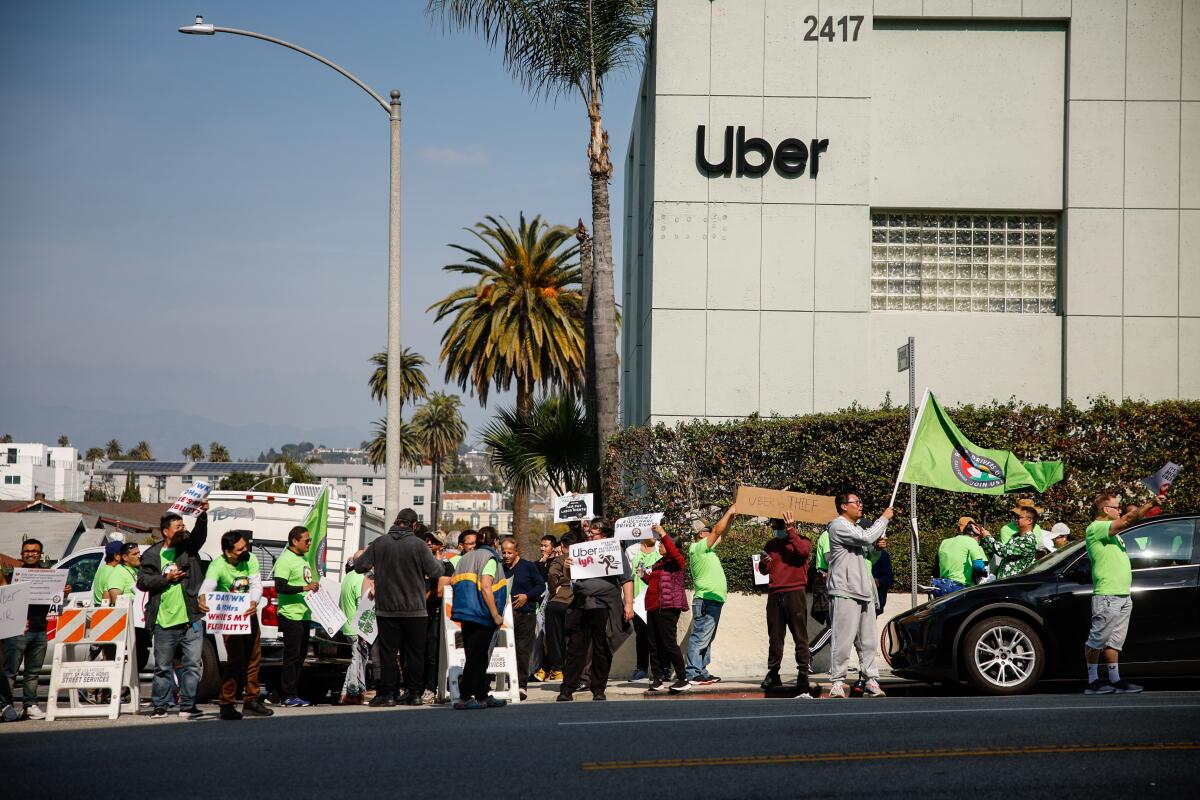
Drivers held isolated protests over the last year in various cities, including Chicago, Las Vegas, Denver, New Orleans, Los Angeles, Minneapolis, Miami and Tampa. Most recently, drivers protested at airports in San Diego and Atlanta in December.
Luis Arias, 32, who has driven for Uber and Lyft since 2017, said he had never participated in driver protests before December.
But long workdays and shrinking earnings prompted him to help organize recent protests at San Diego Airport. Drivers protested at the airportâs waiting lot on Dec. 19 and marched to Terminal 2 in a Dec. 23 action.
âWe have to work too many hours to get the money, and we spend a lot of money on gas, on car services. It feels very unfair,â Arias said.
Nascent organizing among San Diego drivers is gaining traction, he said. About 100 drivers participated in the first protest; now, the informal San Diego group has grown to some 600 members, Arias said.
At the Los Angeles rally, driver Teresa Pitt addressed the crowd from atop a pickup truck, calling on gig workers to push the companies for more.
âThere should be drivers lined up this whole street,â she said.
Some drivers sporting neon-green âRideshare Drivers Unitedâ shirts held signs themed to the holiday: âItâs time for a break up with Uber and Lyft,â read one, with a graphic of a red broken heart.
By about 2p.m., the group of about 100 protesters had thinned out. Some left to head over to Los Angeles International Airport, where another driver protest was scheduled to be held later in the afternoon, while others left for their other day jobs.
More to Read
Inside the business of entertainment
The Wide Shot brings you news, analysis and insights on everything from streaming wars to production â and what it all means for the future.
You may occasionally receive promotional content from the Los Angeles Times.
